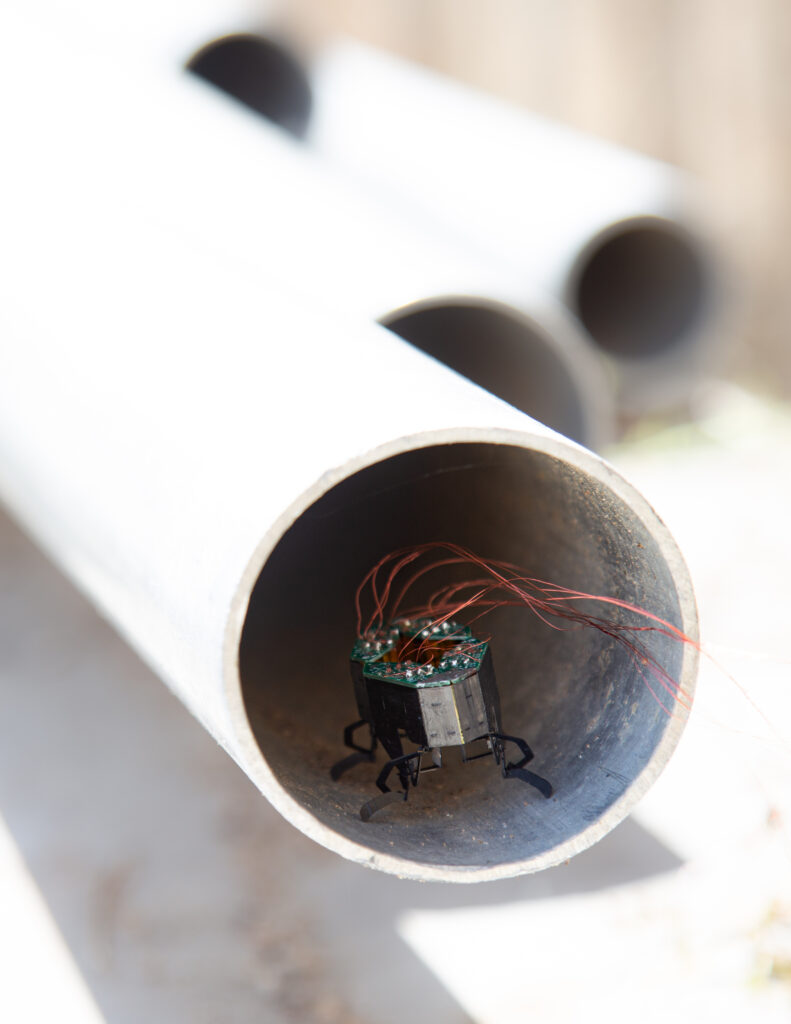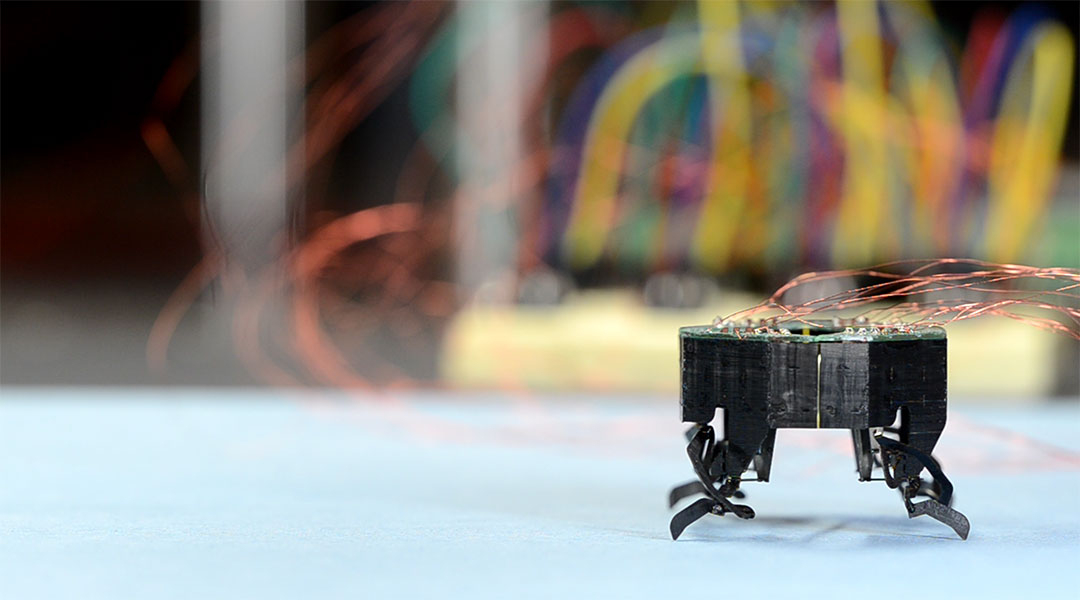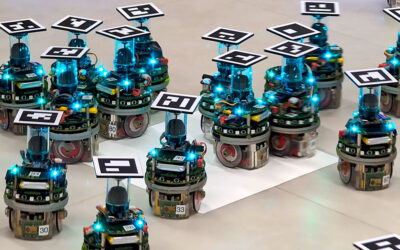The developers of a newly designed robot took inspiration from insects to create a machine with an origami-like body that can change shape and run through a variety of tight spaces.
As robots become an increasingly large factor in our lives, performing jobs humans can’t and enacting tasks that may be too complex or even dangerous, scientists and engineers are also hard at work developing smaller robots that can access and operate in confined spaces.
While considering smaller robots that can adapt to a variety of tight spaces without sacrificing mobility, a team of researchers from the University of Colorado Boulder, including Ph.D. student Heiko Kabutz and assistant professor in mechanical engineering Kaushik Jayaram, developed the “Compliant Legged Articulated Robotic Insect” or CLARI for short.
This four-legged, insect-sized robot is highly dexterous and was built using origami pop-up techniques to achieve robust locomotion in a variety of complex and cluttered environments. The team, whose findings were published in the journal Advanced Intelligent Systems, say it could one day find use in search and rescue operations.
“CLARI is our lab’s first attempt to create an insect-scale, passively shape-morphing robot [for] our long-term goal of realizing high-adaptable robots that can […] move through various natural terrains,” said Jayaram. “To the best of our knowledge, this is the first legged robot of any size capable of body deformation.”
How CLARI scuttles ahead of the competition
The team explained that normally robots the size of CLARI are built with rectangular bodies of a fixed size and shape. CLARI, on the other hand, has an articulated exoskeleton like that of an insect, which allows its body to change shape and size, adapting to its environment based on the available space the robot has to move in.
The use of origami-like elements minimizes friction between the robot’s hard body sections, which also sets it apart from other robots that use soft materials to squeeze into tight spaces.
“Each leg is designed as an individual module, which is then interconnected together with a single degree of freedom joint, allowing the legs to rotate with respect to each other,” Kabutz explained. “The final shape can compress and expand depending on the external forces that are exerted onto the body.”

The team tested CLARI in their custom robot-testing arena kitted out with various obstacles and multiple surfaces that simulate gaps between rocks, tunnels, or blades of stiff grass commonly found in natural terrains. The robot traversed the arena in three main configurations: narrow and long like a silverfish, which is ideal for fast forward motion; a square configuration used for omnidirectional motion; or a wide beetle-like arrangement of its exoskeleton used for lateral movement.
A shape-shifting helper
The team first focused on forward motion and turning speed and then concentrated on more complex locomotion that employed the robot’s shape-morphing abilities. The progress of CLARI and the movement of its body, joints, and legs were recorded using high-speed cameras.
“Robots with abilities such as CLARI have the potential to help inspect expensive machinery by accessing tight spaces other equipment can not access,” Kabutz said. “There are also many uses in the exploration of nature.”
Looking past this to future, Jayaram added in addition to being useful for high-value asset inspection, he and the team hope robots like CLARI can assist with disaster response, environmental monitoring, and even precision medicine. The next steps for the running robot’s development team will be to untether it from its power supply, with the duo predicting CLARI won’t reach mass market use for a few years.
“Currently, a key challenge is to untether the robot, which we hope to integrate in the next year or so,” Jayaram said. “Another challenge is to make it robust to survive in natural conditions, which would require rigorous testing with industry partners to make them ‘field ready’ and might take a few years.
Additionally, an even smaller version of CLARI called mini-CLARI or mCLARI is well into development, with the researchers also working on the addition of sensing devices, like cameras, to the shape-shifting robot.
Reference: H.Kabutz., K. Jayaram, Design of CLARI: A Miniature Modular Origami Passive Shape-Morphing Robot, Advanced Intelligent Systems (2023). DOI: 10.1002/aisy.202300181
Feature image credit: Heiko Kabutz

















